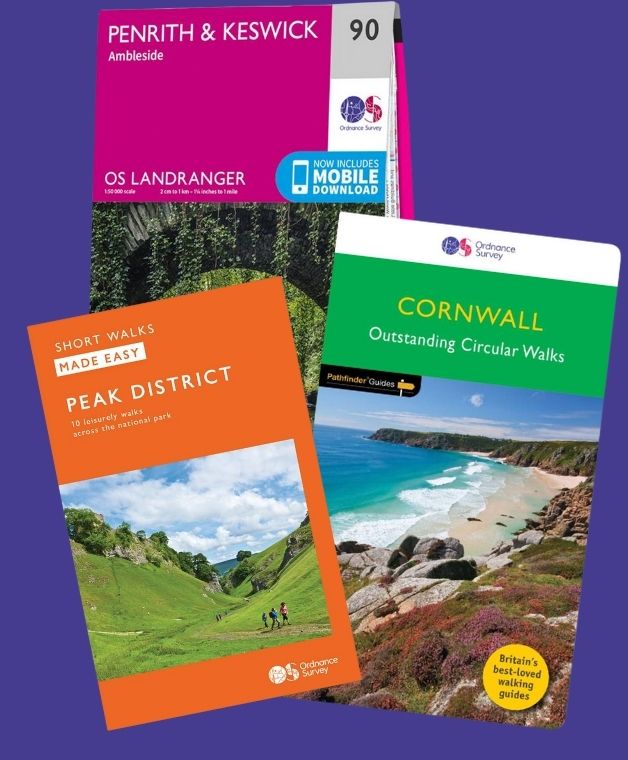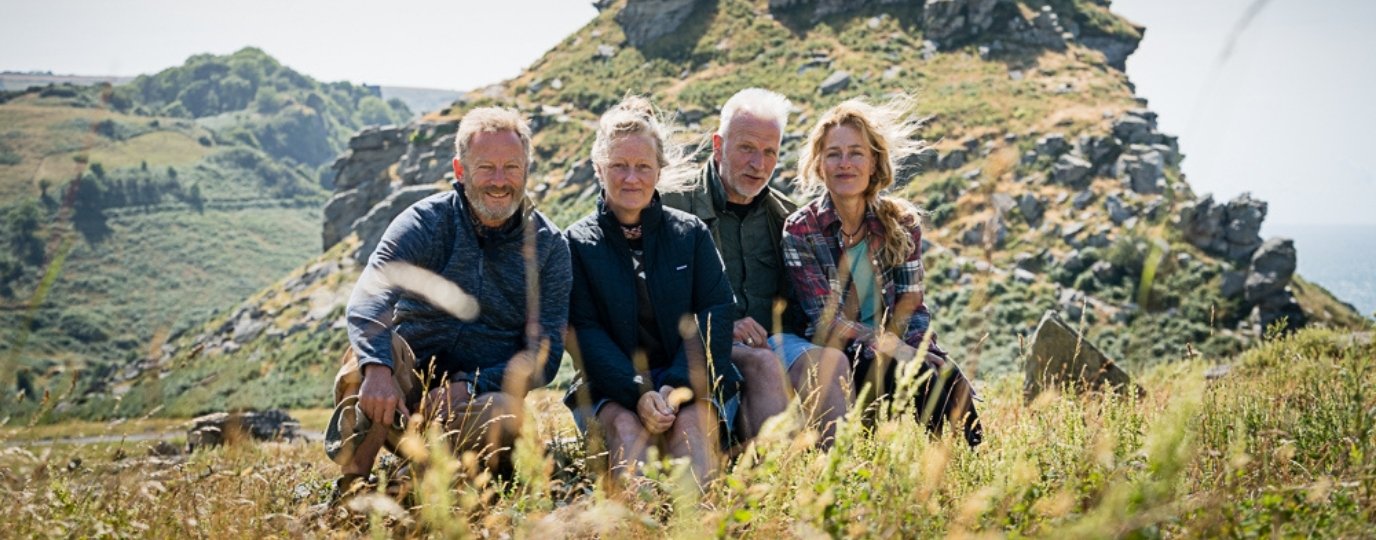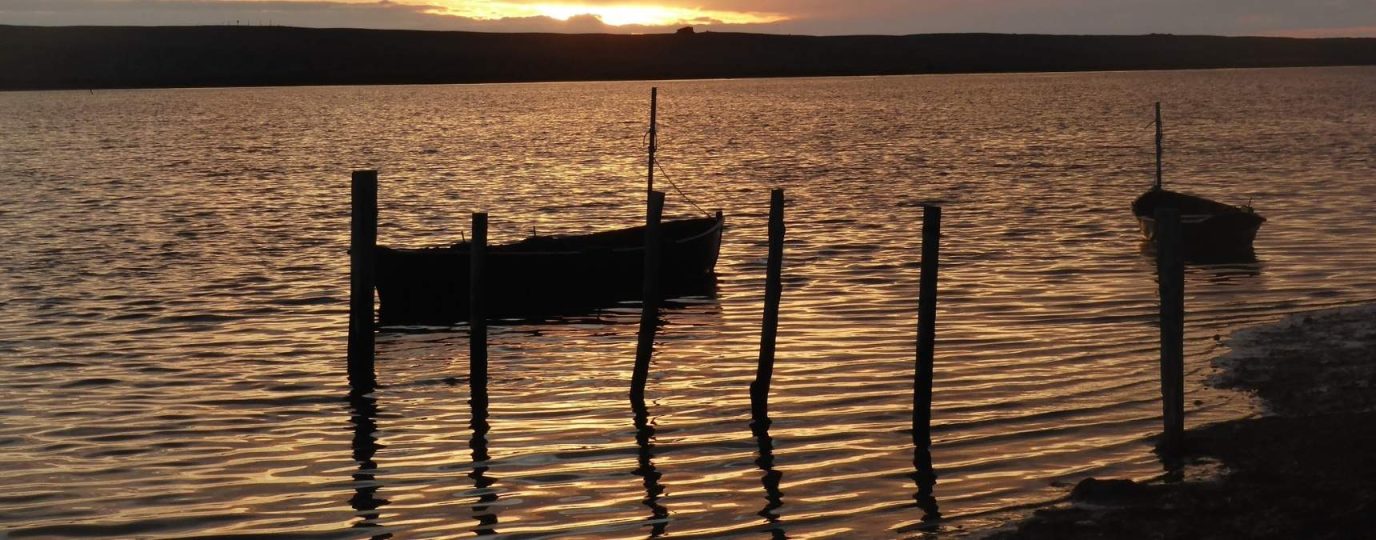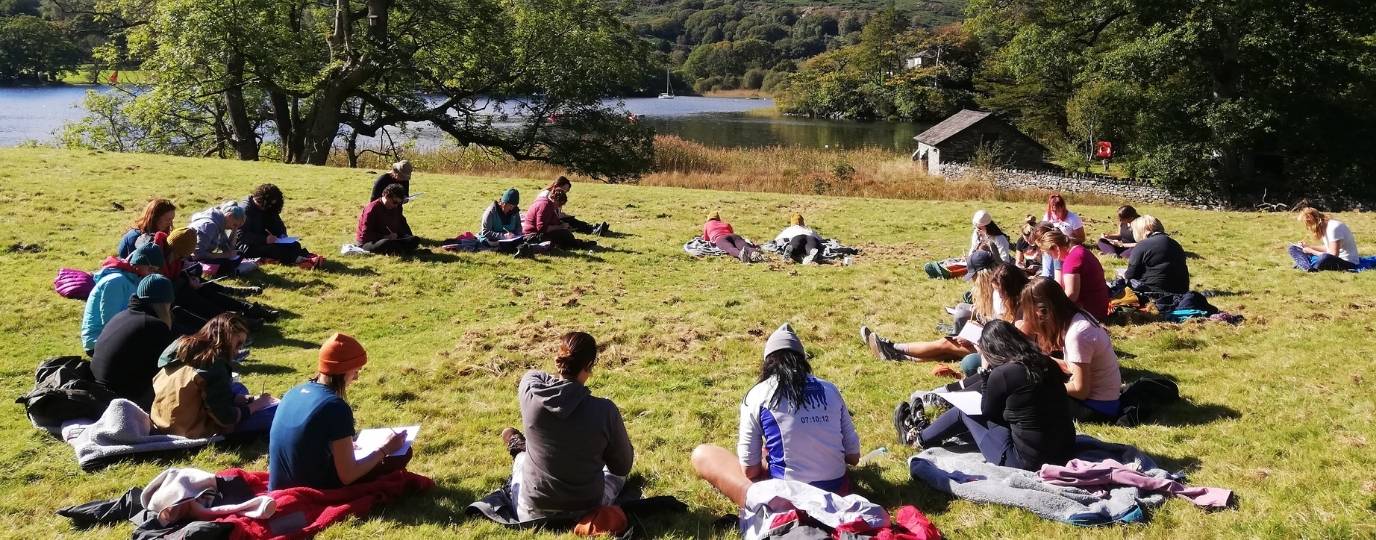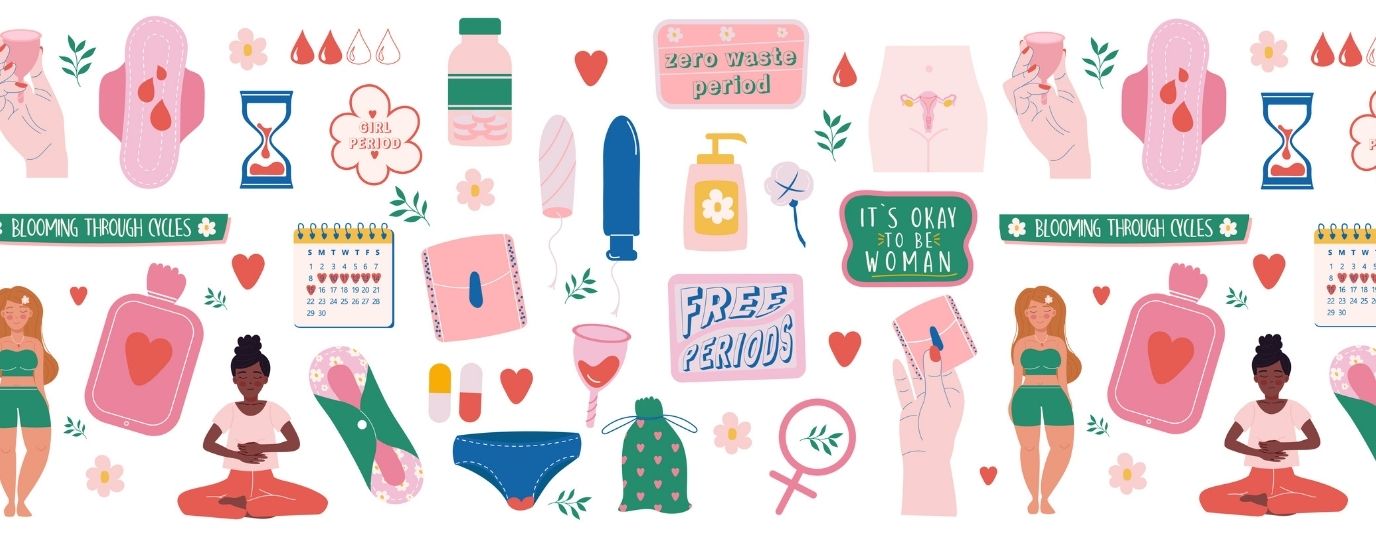We were thrilled to have the opportunity to interview Raynor Winn, the author of The Salt Path, ahead of the release of the highly anticipated film adaptation. The film just like the book is exceptional, with Oscar-worthy performances from Gillian Anderson and Jason Isaacs. We wholeheartedly recommend you visit your local cinema when it is released at the end of May.
How did you feel when you learned The Salt Path was being adapted into a film? What was your reaction to Gillian Anderson being cast as you?
Raynor Winn: The film was optioned quite early on, just a few months after The Salt Path had been published and at that stage it seemed an unbelievable thing, that the option had been taken out on the book. I never for one moment thought it would actually become a film. I never really considered it, other than occasionally at book events when people from the audience would ask who would play me in a film. I’d always say Meryl Streep, and it would always descend into a conversation about dancing on the headlands and the musical. I never really thought about the film actually becoming real.
I think I was in the garden at the time when I was told it was going to be Gillian Anderson. I was quite stunned because she’s just so perfect, so beautiful, so glamorous. I couldn’t understand how she would portray me at my most raw. I went inside to tell Moth that it was going to be Gillian, and he misheard me and thought I’d said Pamela Anderson. Pamela’s done some great work lately and she’s run the ‘no-makeup’ campaign, which is brilliant, but he was just thinking of Baywatch and said, “I don’t think that’s going to work”. Gillian’s been absolutely brilliant. The casting is perfect.
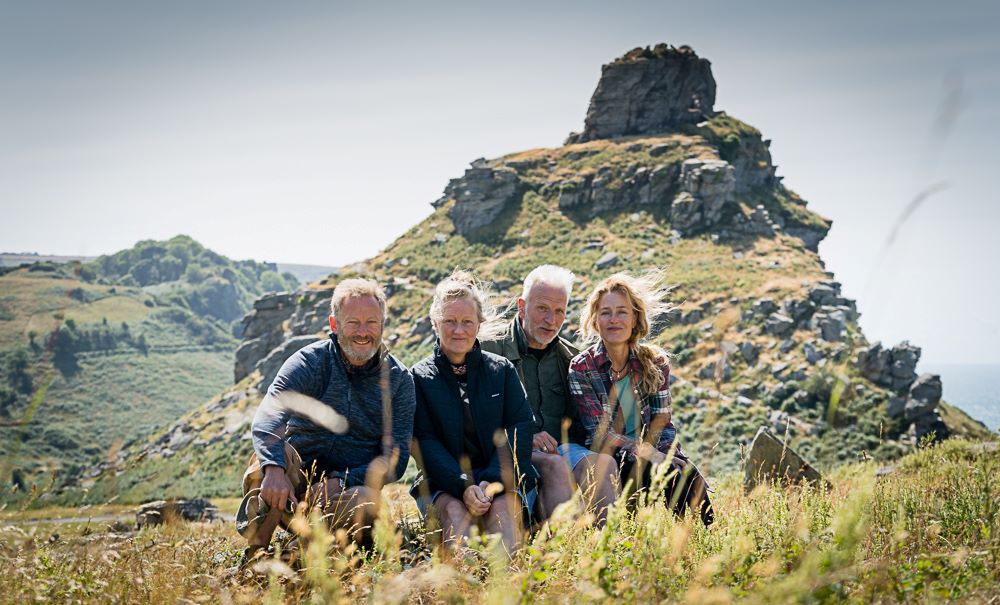
What key message do you hope viewers will take away from the film adaptation of The Salt Path?
Raynor Winn: I think having met so many people now who’ve read the book, I’ve come to realise that there aren’t many of us that make it through life without hitting a wall somehow: emotionally, financially, health-wise. I think it’s quite universal, isn’t it? The question of when we do hit that wall, how do we stand up again, how we go forwards. For the audience, I would very much like to think that they would walk out of the cinema and maybe see somebody bedding down in the shop doorway and see them just a little differently. As a human rather than a statistic.
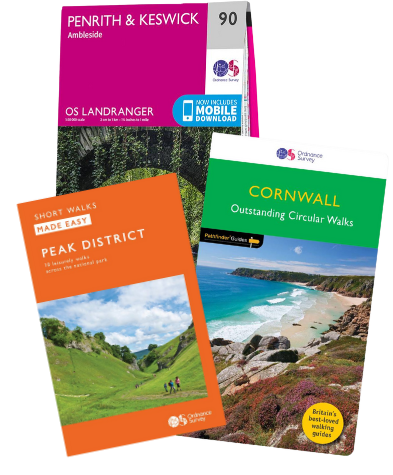
EXPLORE THE
OS Shop
We are with you every step of the way. Shop our trusted walking and hiking maps and guidebooks so you can explore the outdoors with confidence.
Go to the shopHow significant were maps in your journey along the South West Coast Path? Do you prefer using paper maps or digital for planning and during your walks? Or does a good guidebook suffice?
Raynor Winn: Maps were essential on the coast path. We used a small guidebook which had the Ordnance Survey maps printed within it. The whole route was in the guidebook, but it only covered half a mile to either side of the path, so a lot of the time we didn’t know exactly where we were, other than that we were about to go up another headland or round another bay. That’s all we used on that trip. I always prefer a paper map. I like to see it laid out in front of me, to see the bigger landscape around where I’m walking, so paper maps are always my go-to however inconvenient they are. We have used a digital map. We used digital maps when we walked down the country a thousand miles from north Scotland down to the south coast. We use the OS digital online maps, which were great for the tiny little footpaths through Devon. We would still be there, I think, if we hadn’t used those digital maps. But I will always go back to a paper map, always.
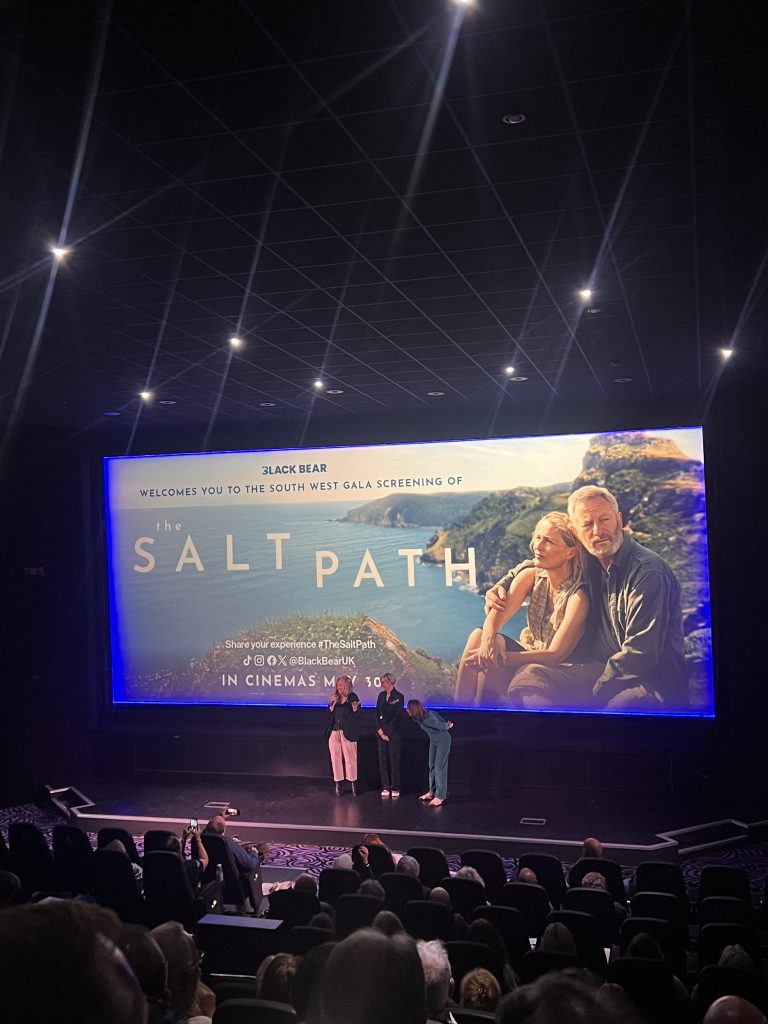
Do you believe long distance walking and wild sleeping have specific health benefits, as they seem to for Moth’s illness? Should walking be considered as a prescription by the NHS?
Raynor Winn: We were built to walk, weren’t we? As human beings, we were made to move our bodies and so to do that can only be beneficial in this world, in the way that we live now. Many of us don’t move enough, so walking can only help. For those of us that can, we certainly should. It’s helped Moth in ways we don’t yet fully understand. Science is starting to point us towards ways in which our bodies do adapt and protect during exercise. We’re starting to get a better understanding of what that is. One day we might understand what happened to Moth and what still happens to Moth on those long walks. Should it be prescribed on the NHS? I think exercise should be encouraged to everyone, everywhere from childhood. It should be our life, we should move, we’re built to move. It shouldn’t need to be prescribed. It should just be the way we live.
From your own personal experience, what are the most significant benefits you have had from walking in terms of your physical and mental health?
Raynor Winn: Obviously it’s helped Moth in all the ways that I’ve written about, but it’s benefited me through lots of weird and strange physical times in my life. The mental health benefits of walking are massive, and we know about those now. I wrote about that in The Salt Path, the sense that we were starting out that walk full of all that anger and bitterness and fear, all those emotions that we had at the beginning of that story. I wrote about those emotions feeling like jagged stones in my pockets and as we walked, it allowed them to smooth down into sea-worn pebbles. I think that’s what walking can do, because it’s that sense of just putting one foot in front of another and simply focusing on the next step that allows so much of that jangled thought in our brains to calm and to settle and to maybe allow us to just live with it a little more comfortably.

EXPLORE THE
OS Shop
We are with you every step of the way. Shop our trusted walking and hiking maps and guidebooks so you can explore the outdoors with confidence.
Go to the shopWhat’s your top tip for long distance walkers? Have you discovered the perfect pair of non-blister boots or socks yet?
Raynor Winn: Top tip: obviously if you’ve read any of my books, you know to look after your feet because there’s a huge section in Landlines about the worst blisters I’ve ever had in my life, about creating blister plaster booties and losing the surface of my feet and then subsequent loss of nails. Biggest tip for long distance walkers? Get a pair of boots that actually fit. That would be great. I have finally, finally found some boots that don’t damage my feet and that’s been a revelation.
The Salt Path is often recommended for women navigating midlife as a lesson in resilience and taking each day as it comes. The film subtly references your own menopause. Do you think walking and being in nature helped you manage some of the symptoms?
Raynor Winn: Interesting question from the Ordnance Survey. I do refer to that in the book because I was 50, obviously, but there was so much going on in my life I hadn’t really thought about midlife, about menopause. And as I’m walking, there’s a point where I realise, I am probably going through the menopause. It’s a subtle reference because that’s probably the only time I thought about it.
Looking back on it now, I realise that walking actually allowed me to walk through most of those menopausal symptoms, because to stay physically active, to be out in the fresh air, to be distracted by everything else that’s going on in your life, and to be out in the environment allowed me to find a sort of calmness. It allowed a sense of centring where whatever was going on within me wasn’t the primary thing in life. The environment and the path that I was walking through became the centre point.
Obviously, there’s still so much mid-life stuff going on there because of children that have left home and the sense of how to act as a mother when the home base is gone. There are so many mid-life issues in there, but for menopause, I would say that’s what should be prescribed. Women of 50 should be on prescription to go for a very long walk.
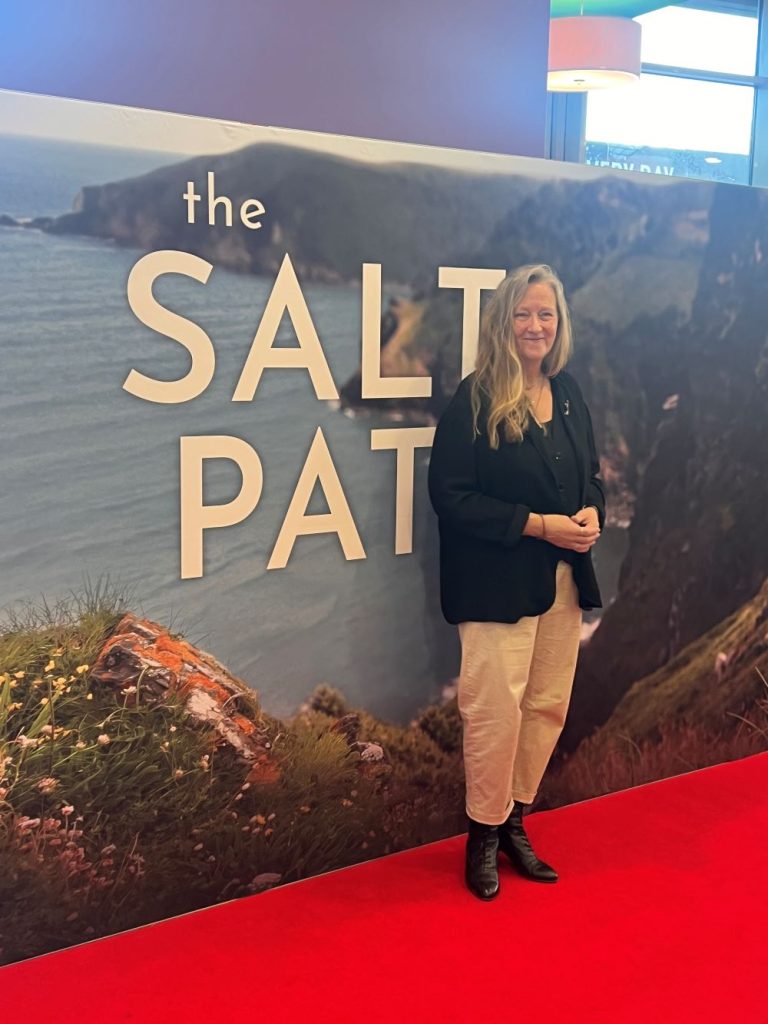
Wild camping is gaining popularity each year. In the film you receive some negative feedback from locals. What have you learned about wild camping etiquette now that you’re more experienced?
Raynor Winn: Obviously there’s a huge etiquette around wild camping. You don’t camp near to habitation. The primary thing is ‘leave no trace’. If the worst thing you’re going to leave behind is a bit of crushed grass, that’s the ideal. To leave as if you weren’t there, that’s how I would wild camp but in those early days, we were just trying to survive the day. Here in the UK, it’s only actually legal to wild camp in Scotland or in parts of Dartmoor, everywhere else it’s not. We were wild camping simply because we had no other way of doing it. We couldn’t afford a campsite, there was no other way. When you think about it, humans have passed over this landscape for millennia, sleeping as they go. We send our teenagers out on Duke of Edinburgh Awards, telling them to pass over the landscape, sleeping as they go. It’s part of our natural nomadic being. Do I think that wild camping should be legal in far more areas of the UK than it is? Most definitely.
Do you have a favourite filming location from The Salt Path, and did you have any input on where each scene should be shot?
Raynor Winn: I had quite a lot of interaction with the producers of the film about the locations, about the landscape, about parts of the path that really mattered to the story. Then it was a matter of logistics and whether or not it was actually possible to film in those areas that mattered so much. I did spend a day on set when the film was being shot at Valley of Rocks, and I hadn’t been back there since walking through with a rucksack on our backs. It was such an incredibly emotional moment because it brought back all those incredible, raw emotions of that time. To see for the first time, Ray and Moth walking over the headland, I had to step back from the filming for a while because it felt so emotional to bring back all those feelings. So, I would say that scene.
What advice would you give to those looking to deepen their connection with the outdoors?
Raynor Winn: I think we’re all looking for this elusive connection to nature. Now it seems to be a buzzword ‘connecting to nature’, but I think what we’re really looking to do is to re-find something far more fundamental in ourselves, and that’s to find our natural selves. The only way to do that is to strip away a little bit of our busy, everyday urban life and maybe just take time to go outside and watch the birds in the sky or sit beneath a tree and hear the wind move through the leaves. It’s not complicated, you don’t have to walk thousands of miles to do it.
Do you have any upcoming plans for more walks or books?
Raynor Winn: I’ve just finished a long walk: the Coast to Coast, which is east to west from Robin Hood’s Bay to Saint Bees, in January, in the snow, in minus ten degrees. Not my best decision! It was absolutely remarkable though, being utterly alone in those wild, vast, open moors and for an entire long-distance walk, not passing another long-distance walker doing the same path. That was that was a surprise in itself. That was an incredible path. I’ve got a new book coming out in October, and you won’t be surprised to hear that walk is in it.
In the film, you and Moth are often seen drinking tea. Have you heard of the phenomenon of the ‘tea alarm’?
Raynor Winn: The tea alarm? No, I haven’t, you’ll have to explain that one to me.
The tea alarm is a British joke that everyone is expected to drink tea at a specific time, often 4pm.
Raynor Winn: Oh, well, I’m sorry, but my tea alarm usually goes off about every 45 minutes. Book four coming up in October has an awful lot of tea drunk in it.
Which was your favourite location while you were walking the SWCP
Raynor Winn: I think my favourite location while we were walking would always be Saint Ives round to Porthcurno. That piece of the path that follows the rugged cliffs around the Land’s End area. Not the concrete building at the end, but those incredible granite cliffs. I can remember being there in an incredible gale and the rain was coming in horizontal. It was wild, just lashing out and even then, that incredible monstrosity of a Land’s End building there was not a soul about. We walked right through it and out the other side onto those rocky clifftops, and it was just us, absolutely alone at the very end of the land. The weather was ripping in off the Atlantic, and I can remember it crashing against the cliffs and throwing fish into the air. It was just absolutely wild. At that point, we stood there, and we could have given up. We could have waited for the bus to come and given up and gone back and sofa surfed. But we chose not to. We chose to keep going. We realised at that point that the path had given us so much. It had given us back a sense of hope that we thought was just completely lost. So that would always be my place.
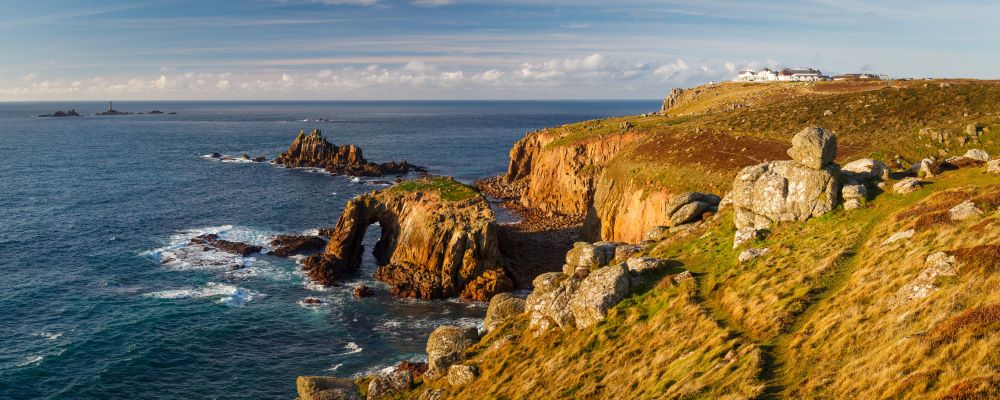
If you could encourage Ordnance Survey map users to walk one stretch of the path, would it be that stretch?
No, it wouldn’t. I would encourage them to go to the north Exmoor coastline and walk those incredible cliffs. Because I’m assuming that these Ordnance Survey map users would be okay on those cliff tops. It’s just the most remarkable area where you go down to sea level, straight back up to 800ft, back down to sea level and straight back up. Then you’ll walk around the headland and it’s as if you’re suddenly face on with the gulls. It’s like you’re flying. It’s the most remarkable piece of coast land. So, yeah, I’d say go there.
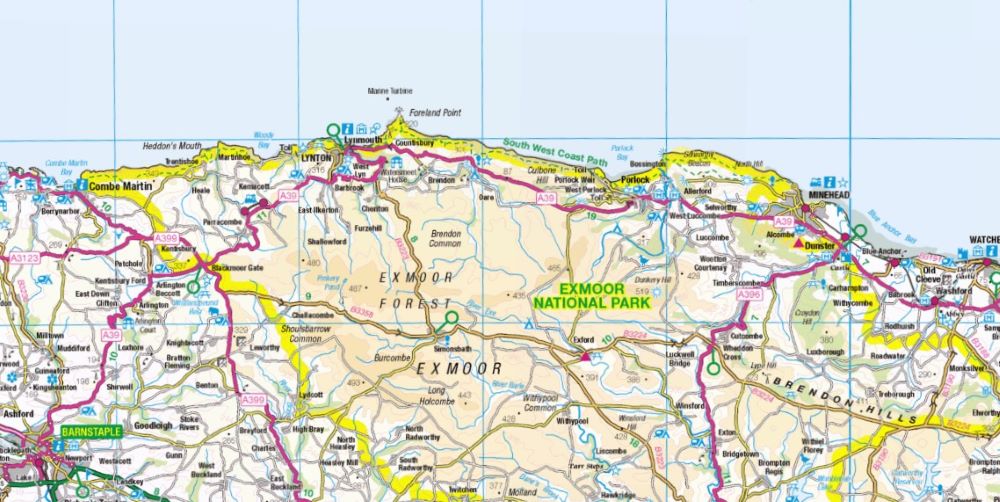
Learn More About The South West Coast Path

South West Coast Path: 10 of the best spots
The South West Coast Path stretches from Minehead in Somerset to Poole Harbour in Dorset. Surging around the south coast, England’s longest National Trail is an awesome place in which to GetOutside. Here are 10 great spots to visit.

8 Great Walks at The Salt Path Filming Locations
The Salt Path Film Locations – Explore 8 exciting circular walks on the South West Coast Path with OS Maps
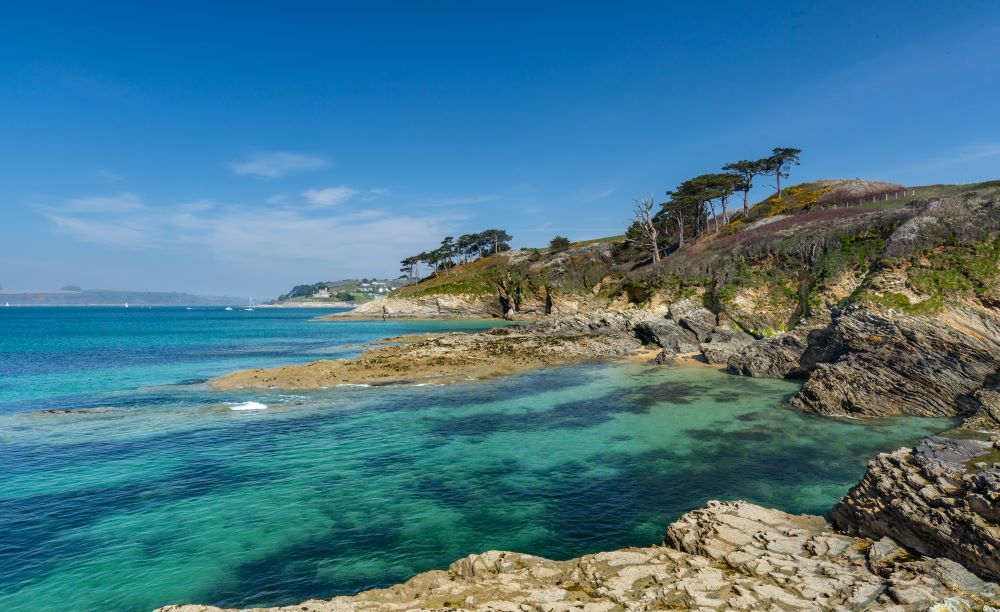
Walk the South West Coast Path in 8 Sections
Discover some of the most picturesque views in England with the South West Coast Path.
EXPLORE WITH
OS Maps
Get more from the outdoors with OS Maps. Whether you’re planning a mountain hike, taking the kids for a woodland bike ride, or looking to discover a new local adventure, OS Maps helps you explore with more confidence.
Discover thousands of ready-made routes from outdoor experts; view & download maps directly to your phone, or print from your computer.
With trusted mapping, route planning tools & features, created by Ordnance Survey; OS Maps helps you make the most of your time outside.
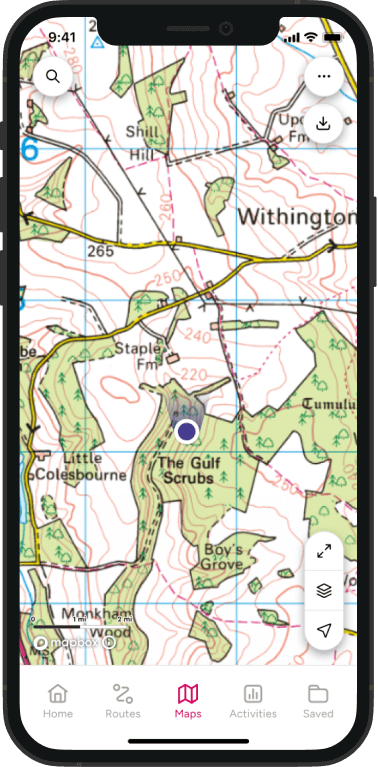
EXPLORE THE
OS Shop
Ordnance Survey are the experts in mapping. Shop our selection of UK Maps for hiking, walking and your next outdoor adventure. Plus don’t miss our selection of essential walking guidebooks.
Whether you’re exploring the breathtaking landscapes of the UK’s National Parks or enjoying a serene coastal getaway, our paper maps are your indispensable travel companion.
Go to the shop